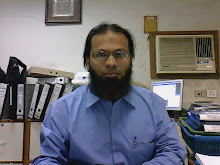 Burns is a city in and the county seat of Harney County, Oregon, United States. The population was 3,064 at the 2000 census, with an estimated population of 3,020 in 2007.
Burns is a city in and the county seat of Harney County, Oregon, United States. The population was 3,064 at the 2000 census, with an estimated population of 3,020 in 2007.Burns was established in the early 1880s and incorporated upon Harney county's creation in 1889. It was named for the Scottish poet Robert Burns by early settler and County Commissioner George McGowan.
Geography and climate.
Burns is located near the northern edge of the arid Harney Basin.
According to the United States Census Bureau, the city has a total area of 3.6 square miles (9.2 km²), all of it land. It is 136 miles (219 km) east of Bend, Oregon, and 130 miles (209 km) west of Ontario, Oregon, on U.S. Route 20 at its intersection with U.S. Route 395, 186 miles (299 km) south of Pendleton, Oregon. A third highway, Oregon Route 78, runs 92 miles (148 km) from Burns southeast past the Malheur National Wildlife Refuge and Steens Mountain to Burns Junction, Oregon.
Burns has a high-desert climate that averages 115 clear days a year and only 29 rainy days. Temperatures average 25 °F (−4 °C) in January and 68 °F (20 °C) in July. Annual precipitation is about 11 inches (28 cm), and about 48 inches (122 cm) of snow a year falls in Burns.
According to the United States Census Bureau, the city has a total area of 3.6 square miles (9.2 km²), all of it land. It is 136 miles (219 km) east of Bend, Oregon, and 130 miles (209 km) west of Ontario, Oregon, on U.S. Route 20 at its intersection with U.S. Route 395, 186 miles (299 km) south of Pendleton, Oregon. A third highway, Oregon Route 78, runs 92 miles (148 km) from Burns southeast past the Malheur National Wildlife Refuge and Steens Mountain to Burns Junction, Oregon.
Burns has a high-desert climate that averages 115 clear days a year and only 29 rainy days. Temperatures average 25 °F (−4 °C) in January and 68 °F (20 °C) in July. Annual precipitation is about 11 inches (28 cm), and about 48 inches (122 cm) of snow a year falls in Burns.
Demographics.
As of the census[1] of 2000, there were 3,064 people, 1,272 households, and 783 families residing in the city. The population density was 861.5 people per square mile (332.3/km²). There were 1,487 housing units at an average density of 418.1/sq mi (161.3/km²). The racial makeup of the city was 93.54% White, 0.20% African American, 2.48% Native American, 0.52% Asian, 0.10% Pacific Islander, 1.11% from other races, and 2.06% from two or more races. Hispanic or Latino of any race were 5.29% of the population.
There were 1,272 households out of which 28.4% had children under the age of 18 living with them, 48.8% were married couples living together, 8.2% had a female householder with no husband present, and 38.4% were non-families. 31.9% of all households were made up of individuals and 12.4% had someone living alone who was 65 years of age or older. The average household size was 2.33 and the average family size was 2.94.
In the city the population was spread out with 26.0% under the age of 18, 7.4% from 18 to 24, 26.6% from 25 to 44, 23.7% from 45 to 64, and 16.3% who were 65 years of age or older. The median age was 39 years. For every 100 females there were 100.4 males. For every 100 females age 18 and over, there were 96.1 males.
The median income for a household in the city was $26,658, and the median income for a family was $31,792. Males had a median income of $24,858 versus $22,097 for females. The per capita income for the city was $16,224. About 8.4% of families and 12.3% of the population were below the poverty line, including 8.7% of those under age 18 and 15.1% of those age 65 or over.
There were 1,272 households out of which 28.4% had children under the age of 18 living with them, 48.8% were married couples living together, 8.2% had a female householder with no husband present, and 38.4% were non-families. 31.9% of all households were made up of individuals and 12.4% had someone living alone who was 65 years of age or older. The average household size was 2.33 and the average family size was 2.94.
In the city the population was spread out with 26.0% under the age of 18, 7.4% from 18 to 24, 26.6% from 25 to 44, 23.7% from 45 to 64, and 16.3% who were 65 years of age or older. The median age was 39 years. For every 100 females there were 100.4 males. For every 100 females age 18 and over, there were 96.1 males.
The median income for a household in the city was $26,658, and the median income for a family was $31,792. Males had a median income of $24,858 versus $22,097 for females. The per capita income for the city was $16,224. About 8.4% of families and 12.3% of the population were below the poverty line, including 8.7% of those under age 18 and 15.1% of those age 65 or over.
References.













